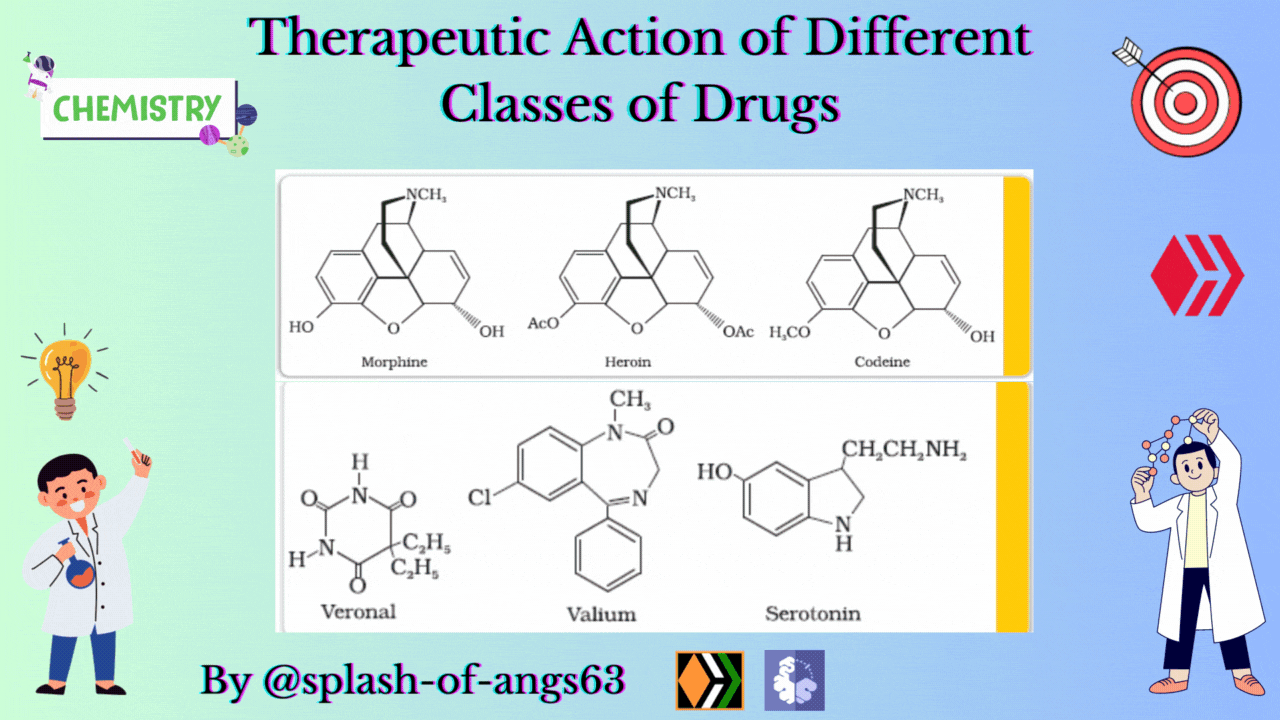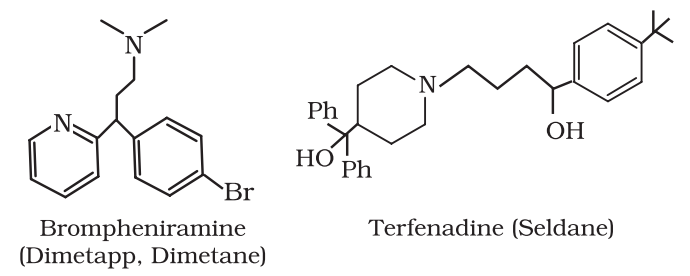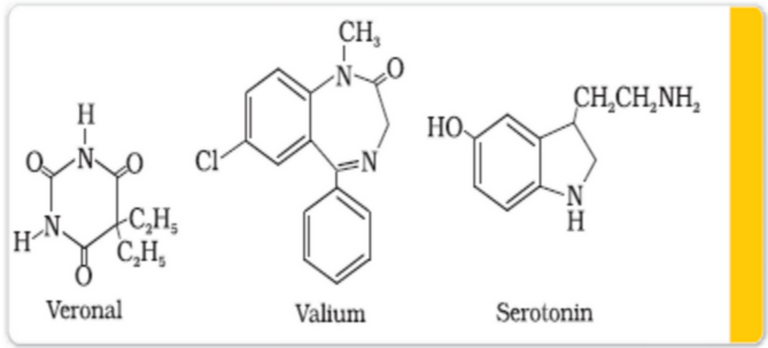Therapeutic Action of Different Classes of Drugs |ChemFam #43|
Greetings to everyone! So, in my last blog, we have discussed the basics of drugs, its classification and regarding the drug-target interaction. We have understood the design of enzymes as drug target and also the design of receptors as drug target. Today, we shall be discussing about the therapeutic action of drugs. For studying this, we have to categories drugs into different classes and understand the therapeutic action of each classes.

Antacids
Production of acid in the stomach more than the normal condition causes irritation and pain. In severe cases, ulcers are developed in the stomach. Until 1970, only treatment for acidity was administration of antacids, such as sodium hydrogencarbonate or a mixture of aluminium and magnesium hydroxide. However, excessive hydrogencarbonate can make the stomach alkaline and trigger the production of even more acid. Being insoluble, metal oxides are better alternatives to them and they do not increase the pH above neutrality. These treatments control only symptoms and not the cause. Therefore, with these metal salts, the patients can not be treated easily. In advanced stages, ulcers can become life threatening and the only treatment remains is the removal of the affected area from the stomach.

A major breakthrough in the treatment of hyperacidity came through the discovery according to which a chemical, histamine, stimulates the secretion of pepsin and hydrochloric acid in the stomach. The drug named cimetidine (Tegamet) was developed to prevent the interaction of histamine with the receptors present in the stomach wall. This resulted in the release of lesser amount of acids. The importance of the drug is so much that it could be reflected being the largest selling drug in the world u till another drug, rantidine (Zanatac) was discovered.
Antihistamines
Histamine is basically a potent vasodilator, which means that it dilates the blood vessels. It has various functions. It contracts the smooth muscles in the bronchi and gut and relaxes other muscles, such as those in the walls of fine blood vessels. Histamine is also responsible for the nasal congestion associated with common cold and allergic response to pollen.
Synthetic drugs, brompheniramine (Dimetapp) and terfenadine (Seldane) act as antihistamines. They interfere with the natural action of histamine by competing with histamine for binding sites of receptors which histamine exerts its effect.

Now, one may question self that why do above mentioned antihistamines does not affect the secretion of acid in the stomach? The answer or reason to that is antiallergic and antacid drugs work on different receptors.
Neurologically active drugs
Neurologically active drugs can be classified into two categories viz. tranquilizers and analgesics.
(a) Tranquilizers
Tranquilizers and analgesics are neurologically active drugs. These affect the message transfer mechanism from nerve to receptor.
Tranquilizers are a class of chemical compounds used for the treatment of stress and mild or even severe mental diseases. These relieve anxiety, stress, irritability of excitement by inducing a sense of well-being. They form an essential component of sleeping pills. There are different types of tranquilizers. They function by different mechanisms. For example, noradrenaline is one of the neurotransmitter that plays a role in mood changes. If the level of noradrenaline is low for some reason, then the signal sending activity becomes low and the person suffers from depression. In such situations, antidepressant drugs are required. These kind of drugs inhibit the the enzymes which catalyses the degradation of noradrenaline. If the enzyme is inhibited, this important neurotransmitter is slowly metabolized and can activate its receptor for longer periods of time, thus counteracting the effect of depression. Iproniazid and phenelzine are two such drugs.

Some tranquilizers namely, chlordiazepoxide and meprobamate are relatively mild tranquilizers suitable for relieving tension. Equanil is used in controlling depression and hypertension.

Derivatives of barbituric acid viz., veronal, amytal, nembutal, luminal and seconal constitute an important class of tranquilizers. These derivatives are calkled barbiturates. Barbiturates are hypnotic i.e., sleep producing agents. Some other substances used as tranquilizers are valium and serotonin.

(b) Analgesics
Analgesics reduce or abolish pain without causing impairment of consciousness, mental confusion, paralysis or some other disturbances of nervous system. These are classified as follows :
(i) Non narcotic (non addictive) analgesics
Aspirin and paracetamol belong to the class of non-narcotic analgesics. Aspirin is the most familiar example. Aspirin inhibits the synthesis of chemicals known as prostaglandins which stimulate inflammation in the tissue and causes pain. These drugs are effective in relieving skeletal pain such as due to arthritis. They have many other effects such as reducing fever (antipyretics) and preventing platelet coagulation. Because of its anti blood clotting action, aspirin finds uses prevention of heart attacks.
(ii) Narcotic analgesics
Morphine and many of its homologues, when administered in medicinal doses, relieve pain and produce sleep. In poisonous doses these produce stupor, coma, convulsions and ultimately death. Morphine narcotics are sometimes referred to as opiates, since they are obtained from opium poppy.

These analgesics are chiefly used for the relief of postoperative pain, cardiac pain and pains of terminal cancer and in child birth.
Allow me to wrap my post for today. We shall meet again!
Introduction to Drugs and Drug-Target Interaction |ChemFam #42|
Scientists Analyze a Single Atom With X-Rays For The First Time |ChemFam #41|
Can We Slow Down Aging? |ChemFam #40|
Studying The Cluster Compounds: The LNCC |ChemFam #39|
Biochemistry of Calcium: Role of Calcium in Muscle Contraction |ChemFam #38|
Biosynthesis of Fatty Acids: De Novo Synthesis of Fatty Acids |ChemFam #37|
Hapticity and The Eighteen Electron Rule |ChemFam #36|
An Introduction To Organometallic Chemistry |ChemFam #35|
Applications of Zeolites: The 3D Molecular Sieves |ChemFam #34|
Properties of Zeolites: The 3D Molecular Sieves |ChemFam #33|
Zeolites: The 3D Molecular Sieves |ChemFam #32|
The Beauty of Eucalyptus Tree |ChemFam #31|
The Accidental Cure for Cancer: Cisplatin |ChemFam #29|
Acceptorless Dehydrogenation and Related Transformations |ChemFam #28|
PS The thumbnail image is being created by me using canva.com by using template image from neetprep


Thanks for your contribution to the STEMsocial community. Feel free to join us on discord to get to know the rest of us!
Please consider delegating to the @stemsocial account (85% of the curation rewards are returned).
Thanks for including @stemsocial as a beneficiary, which gives you stronger support.